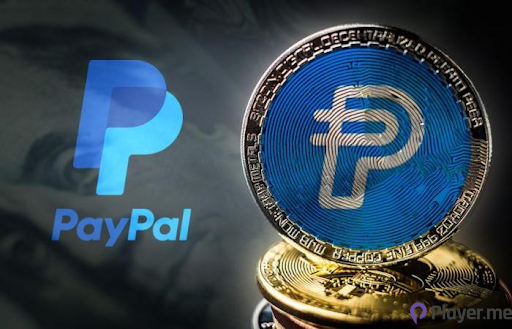PayPal, the renowned online payment platform, has been a dominant force in the digital financial space for over two decades. With its user-friendly interface and secure transactions, PayPal has become a preferred choice for millions of individuals and
businesses worldwide. As a pioneer in the industry, it has consistently adapted to emerging technologies to stay ahead of the curve.
In light of the growing demand for stablecoins, PayPal has recently made an innovative move by introducing its USD-backed stablecoin, sending shockwaves through the market and igniting a surge in its share price.
Stablecoins offer numerous benefits for users, including fast and low-cost transactions, global accessibility, and reduced exposure to market fluctuations. As a result, it has garnered immense popularity among individuals and businesses seeking a reliable means of transferring value within the digital realm.
Also Read: Hana Bank Explores CBDCs and Stablecoins: Embracing Innovation
Overview of the Stablecoin’s Key Features and How it Maintains a Stable Value
PayPal’s USD-backed stablecoin will be pegged to the United States dollar. For every unit of stablecoin issued, an equivalent amount of US dollars will be held in reserve. This ensures the stablecoin maintains a stable value, as it will always be redeemable at 1:1 with the US dollar.
Using blockchain technology, PayPal’s stablecoin will offer fast, secure, and low-cost transactions. Additionally, users will benefit from the transparency and immutability inherent in blockchain, further enhancing the trust and reliability of the stablecoin.
The introduction of PayPal’s USD-backed stablecoin has garnered significant attention, leading to a surge in the company’s shares. This move highlights PayPal’s commitment to innovation. It signals a growing acceptance of stablecoins as a viable form of digital currency in mainstream finance.
To learn more about recovering funds from cryptocurrency scams, click here.
Factors Contributing to the Surge in Paypal’s Share Price

Following the stablecoin announcement and PayPal’s share price experienced a remarkable surge, several factors contributed to this upward momentum:
- Firstly, introducing a stablecoin by a reputable and widely used payment platform like PayPal signalled increased adoption and legitimacy of cryptocurrencies. Investors recognised this as a significant milestone in integrating digital assets into mainstream financial systems.
- Secondly, the stablecoin offering allowed PayPal to tap into the growing demand for stable digital currencies, providing users with a reliable alternative to traditional fiat currencies. This innovation expanded PayPal’s customer base and revenue potential, attracting investors seeking exposure to the cryptocurrency market.
A similar pattern emerges when comparing PayPal’s share price performance to other companies that have introduced stablecoins. Companies like Facebook, with its Libra stablecoin, and Circle, with its USDC stablecoin, experienced substantial share price gains upon their respective announcements.
The introduction of stablecoins by these companies demonstrated their commitment to embracing blockchain technology and leveraging the potential of digital currencies. This strategic move enhanced investor confidence and positioned them as pioneers in the cryptocurrency space, leading to positive market sentiment and subsequent share price appreciation.
Benefits and Risks of PayPal’s Stablecoin

One of the critical benefits of PayPal is the potential for reduced transaction fees and faster settlement times. By leveraging blockchain technology, PayPal can streamline its payment processes and lower costs, ultimately enhancing its competitiveness in the market.
Furthermore, the introduction of PayPal Coin could revolutionise the payment ecosystem by enabling seamless cross-border transactions. Traditional methods of transferring funds across borders often involve high fees and lengthy processing times. With PayPal Coin, users can transact instantly and at a fraction of the cost. Also, the stability of the stablecoin will provide users with a reliable and predictable medium of exchange, eliminating the volatility associated with other cryptocurrencies.
Nevertheless, while the introduction of PayPal Coin brings numerous benefits, it raises regulatory and security concerns. Stablecoins, like other cryptocurrencies, operate in a relatively unregulated space that poses challenges for governments and financial institutions. Regulators will need to establish clear guidelines to ensure compliance and protect consumers. Also, the security of the stablecoin infrastructure will be paramount. Therefore, PayPal must implement robust security measures to safeguard user funds and prevent potential breaches or hacks. A failure in security would damage its reputation and undermine trust in stablecoins as a whole.
Also Read: LCX Crypto: Unravelling the Future of Cryptocurrency Exchanges
Conclusion
Introducing a USD-backed stablecoin by a trusted and well-established financial institution like PayPal adds credibility to the concept of stablecoins and may alleviate some concerns surrounding volatility. This move brings stability to the table, making cryptocurrencies more accessible and appealing to a broader audience. While the future growth and adoption of PayPal’s stablecoin remain uncertain, its entry into the market signals a significant milestone in the evolution of digital currencies. As the market continues to evolve, it will be fascinating to see how PayPal’s stablecoin impacts how we transact and engage with cryptocurrencies in the future. Last but not least, Blockchain.com is another interesting topic about crypto.
Frequently Asked Questions
Are Stablecoins Regulated by Financial Authorities?
Stablecoins, including PayPal’s newly introduced USD-backed stablecoin, are subject to varying degrees of regulation by financial authorities depending on the jurisdiction. However, the regulatory landscape for stablecoins is still evolving, and different countries have different approaches to their regulation, which means that the level of oversight and regulation can vary significantly from one jurisdiction to another.
How Does a USD-Backed Stablecoin Maintain Its Value?
A USD-backed stablecoin maintains its value by being pegged to the US dollar on a one-to-one basis. This means that for every unit of the stablecoin in circulation, there is an equivalent amount of US dollars held in reserve by the issuer. It ensures that the stablecoin’s value remains stable and closely tracks the value of the US dollar.
Is Paypal the First Company to Introduce Stablecoin?
No, PayPal is not the first company to introduce a stablecoin. Stablecoins are cryptocurrencies designed to maintain a stable value by pegging them to an underlying asset, typically a fiat currency like the US dollar. Prior to PayPal’s introduction of its USD-backed stablecoin, various other companies and projects, such as Tether (USDT), USD Coin (USDC), and Dai (DAI), have already launched stablecoins in the market.





